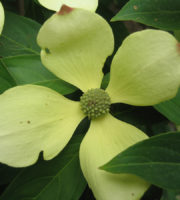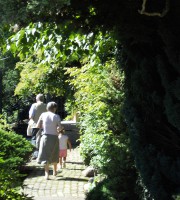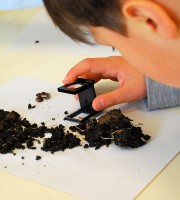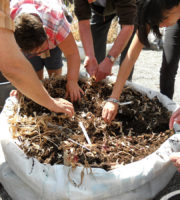 The permanent exhibition dedicated to succulents, dates back to 2008 and is available from March to October. There are about 100 species that are placed in an embankment bordered by a black sheet calendared mainly dimensional according to a distribution policy. The interpretation of the collection is favored by a device that makes the visit effective and allows visitors to trace the geographical distribution, to their native climates, environmental adaptations and the main families present, as well as the images of the species in the wild and full bloom.
The permanent exhibition dedicated to succulents, dates back to 2008 and is available from March to October. There are about 100 species that are placed in an embankment bordered by a black sheet calendared mainly dimensional according to a distribution policy. The interpretation of the collection is favored by a device that makes the visit effective and allows visitors to trace the geographical distribution, to their native climates, environmental adaptations and the main families present, as well as the images of the species in the wild and full bloom.
The exhibition is the result of collective action conducted with the involvement of some volunteers from the Bank of Time – Bergamo Center and the Association Cactus & Co. Lombardy, who participated in a decisive way to the transfer and planting of succulent already supplied or purchased for the occasion, integrating them with interest specimens available from a number of donors. The inauguration took place on the occasion of the celebrations for the Solstice of the Botanical Gardens of Lombardy in 2008.
The most represented family is obviously that of Cactaceae that includes in-kind approximately 3,000 species and 120 genera distributed mainly in America, from Canada to Patagonia, with particular concentrations in the steppes, grasslands and semi-deserts, but also in hot and humid forest environments tropical and subtropical. The Mammillarias (Mammillaria bombycina, M. chionocephala, columbiana M., M. gigantea, M. longimamma, M. microthele, and M.perbella M. polythele) inhabit the vast plains and the highlands of Mexico and the southwestern United States (Texas, New Mexico, Arizona) where environmental conditions show a strong temperature range between day and night and between summer and winter. Ariocarpus furfuraceus, Echinocactus grusonii, Claret Cup Cactus, Ferocactus histrix, peyote, live in the central states of Mexico where there is a huge variety of species. Rhipsalis sulcatavive in the tropical forests of Central America, as epiphytic cacti growing in the forks of trees and are able to absorb moisture from the air with the aerial roots even in times of drought. Cleistocactus strausii and Rebutia heliosa come from the highlands of Bolivia and Argentina, from the plains and from the South American grasslands of Venezuela, Ecuador, Peru, Bolivia, northern Chile and other many genera come from Argentina including Parody, Gymnocalycium, Trichocereus, Echinopsis represented in the greenhouse. Among the Apocynaceae, succulents which are in tropical and subtropical environments, you can observe now a historic specimen donated to the Botanical Garden of lamiereii Pachypodium, endemic plant of Madagascar, with the stem provided with long spines (which are actually stipules transformed; Stapelia gigantea is native to South Africa, however, has showy colorful flowers but the unpleasant smell, will help to attract insect pollinators.
Among the Euphorbiaceae, Euphorbia candelabrum is endemic to the Horn of Africa and East Africa, in the areas around the Rift Valley, in the desert areas of Ethiopia, Somalia, Sudan, Kenya, Tanzania, Uganda, Burundi, Rwanda, Zaire, Malawi, Zambia and Zimbabwe; Euphorbia horrida is a prime example of evolutionary convergence with Cactatceae the Americas with regard to the development of long thorns. This phenomenon manifests itself in different species, living in the same type of environment, driven by the same environmental pressures evolve sviluppan facilities or adaptations that make them similar. Usually originate in South Africa but the appearance of a globular cactus Euphorbia and E. meleformis is large as that stands for long-lasting floral stalks on the plant, but very fragile and perishable.
Agave parviflora and Agave victoriae-reginae Asparagaceae of the family live in desert or semi-desert in Mexico where they grow mainly in calcareous soils along the cliffs of the canyon, and, like all the Agaves, shortly after flowering die guaranteeing the propagation thanks to the seeds dispersed at the base of the stem.
The Aloe family of Xanthorrhoeaceae belongs to an African native genus and is distributed in the Cape Province in South Africa, in the mountainous areas of tropical Africa, and neighboring areas such as Madagascar, the Arabian Peninsula and other African islands. In the mountains north of Cape Town we encounter an extraordinary variety of genres and species represented in the greenhouse from descoingsii Aloe, Gasteria Batesiana, Gasteria maculata, Haworthia cooperi, H. cuspidata, H. cymbriformis.
Among the Crassulaceae, Aeonium arboreum is native to the Canary Islands and Africa, but also naturalized in many parts of southern Italy; Kalanchoe beharensis and K. tomentosa plants are shrubs with dense hairs on the original leaves of Madagascar but naturalized in other parts of Africa and in Southeast Asia.
Most of the plants grown in the greenhouse of succulents of the Botanical Garden are part of Appendix I and II of the CITES Convention, also known as the Washington Convention on International Trade in Species of Wild Fauna and Flora threatened with extinction, which is also with the joining of Italy and which regulates the international trade of about 25,000 species. Appendix I includes species threatened by extinction for which it is strictly forbidden to trade. In Appendix II there are species potentially at risk and for export and sale there must be a certificate issued by the competent authorities of each member country. One of the primary objectives of Botanical Gardens is to safeguard biodiversity through ex situ conservation actions or to propagate and conserve endangered species in order to make possible the eventual reintroduction into their natural environments.
Some of the cultivated species are included in the IUCN Red List – International Union for Conservation of Nature: Echinocactus grusonii is seriously threatened (CR -Critical endangered) and exposed to an extremely high risk of extinction because of collecting. That, despite the popularity and ease of cultivation, has greatly reduced the distribution area of origin now estimated at an area of less than 10 square kilometers and looted more specimens; Astrophytum asterias is considered Vulnerable (VU – Vulnerable) and at risk of extinction due to indiscriminate collection of collectors, excessive grazing and conversion of home environments in farmland; Obregonia denegrii similarly at risk for excessive sampling of the local population for medicinal purposes and for the accelerated erosion from overgrazing by livestock activities; Turbinicarpus lophophoroides is threatened by illegal harvesting, farming activities and the construction of roads.
Leuchtenbergia principis and Peyote are species “at risk relative” (LC – Least Concern), due to the illegal trade Rhipsalis sulcata is threatened by the transformation of the environment of origin, but being insufficient data (DD – deficient Data) , further research for a proper risk classification is needed ..











